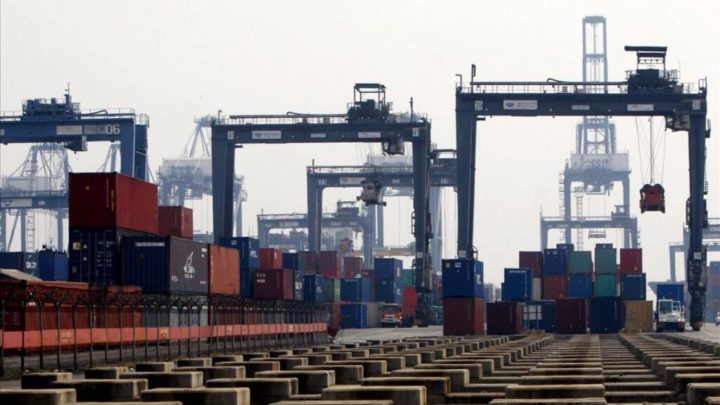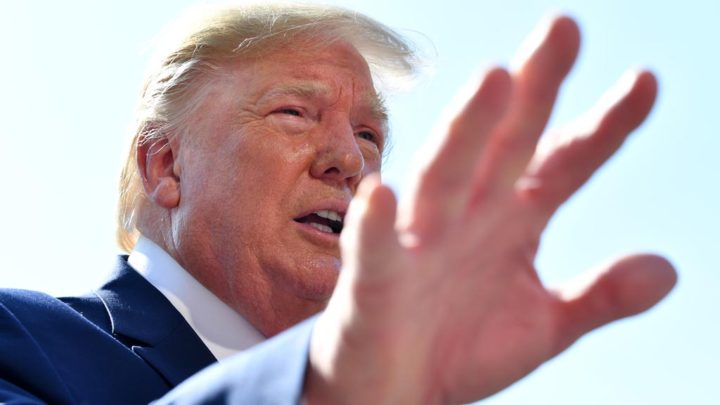Ari Kuncoro: The Widening Deficit
Professor and Dean, Economics and Business School, University of Indonesia
United States President Donald Trump has a habit of making weekend surprises. Last week, he announced that he would impose fresh 10 percent tariffs on another US$300 billion worth of Chinese goods, beginning Sept. 1.The impact on the world economy of the new tariff plan could be predicted. US share prices declined, and the slowdown in the US economy may well continue. Trump’s fresh tariff plan is not in line with the advice of most White House economic advisers, given that signs of the US recession have increasingly become more apparent.
Conventional signs, such as the US government’s long-term bond interest rates being lower than short-term rates, began to appear earlier this year, and the rate difference has widened since July 2019. Meanwhile, in the real sector, US economic growth in the second quarter 2019 slowed to 2.1 percent, down from 3.1 percent in the first quarter of 2019.
With these new tariffs, it is estimated that a recession in the US will occur within nine months simultaneously with the US presidential election. The announcement neutered the effect of the cut in interest rates by the US Federal Reserve (the Fed), which was designed to ensure the US recession was not too deep.
Trump also seems to be aware about this. However, instead of delaying the tariffs on the Chinese goods, he asked the Fed to further lower the benchmark interest rate.
Rupiah movements
For Indonesia, the above conditions have affected the country’s balance of payments as seen in the latest data issued by Bank Indonesia. There are two major components, namely the current account (exports and imports of goods and services including primary and secondary incomes) and the capital account.
account.

Containers are loaded and unloaded at the Jakarta International Container Terminal of Tanjung Priok Port in North Jakarta on Friday (9/8/2019). Statistics Indonesia (BPS) data show that Indonesian exports reached US$11.78 billion in June 2019, while imports amounted to $11.58 billion.
The current account deficit in the second quarter of 2019 widened to $8.44 billion, 3.04 percent of gross domestic product (GDP), up from 2.6 percent of GDP in the first quarter of 2019.
If it is traced, the cause of the current account deficit is more serious because there are more factors, such as payments of foreign loan principals and interest and the repatriation of dividends of foreign companies.
As a result, primary income suffered a deficit of $8.72 billion, while secondary income (including remittances of Indonesian workers) booked a surplus of $2 billion, giving little compensation to the primary income deficit.
Due to the widening of the current account deficit, the balance of payments suffered a deficit of $1.97 billion.
The surplus in the capital account in the second quarter of 2019, which reached $7 billion, was insufficient to cover the current account deficit.
A similar condition occurred in the first quarter until the third quarter of 2018. As a result, there was no further strengthening of the rupiah, even though short-term capital inflows were quite large. The rupiah fluctuated in a narrow range between Rp 13,900 and Rp 14,300 per US dollar.
On the other hand, the strengthening of the rupiah exchange rate to a level below Rp 14,200 per US dollar in the past week made the rupiah the “king” currency in Asia even though it only rose by 0.46 percent.
The good news is that the trade balance, as part of the current account, still recorded a thin surplus of $197 million in June 2019. This surplus came from the non-oil and gas trade balance and other goods that can compensate for the oil and gas trade balance deficit. However, the negative impact from the trade war remains visible. Both exports and imports declined. However, the trade balance still recorded a surplus as imports fell more sharply.
The potential for short-term capital inflows into Indonesia remains in the coming quarters. Beyond the grip of conventional economic theory, the decline in the US benchmark interest rate will not lead to an increase in investment, but it is, instead, used as a justification for the presumption that a recession in the US is approaching.
Due to growing uncertainty, investors will continue to place their money in the form of short-term US government bonds, causing deeper inverted yield curves.

A farmer shows harvested jasmine in Tegal, Central Java. The regency produces an average 3,201 tons of jasmine per month. Of this amount, 110 tons are exported to Malaysia, Singapore, Thailand and Saudi Arabia.
Another side effect, the US dollar index rose to 98.68, the highest figure in 2019. On the positive side, because of fears of a US recession, international financiers will also allocate a portion of their portfolios to countries deemed attractive, including Indonesia. This could mitigate the negative effect from the widening current account deficit on the rupiah exchange rate.
Pessimism and optimism
The lingering impact of the 2019 presidential election seems still to affect people’s desire to spend their income. The Consumer Confidence Index (IKK) survey conducted by BI showed a weakening of the IKK from 126.4 in June 2019 to 124.8 in July, especially in the community groups who spent more than Rp 3 million per month.
In terms of age, this pessimism occurred more among people aged 20-50 years. The IKK declined due to the perception of job availability and income, thereby reducing the desire to buy durable goods.
As a result, the economic growth in the second quarter of 2019 was only 5.05 percent on an annual basis, with consumer spending further dominating economic growth as the contribution of investment declined. The figure is lower than the 5.07 percent in the first quarter of 2019.
On the positive side, the Consumer Expectation Index (CEI) increased to 138.4 from 138.1 on the back of expectations of wage increases in early 2020. On the other hand, the production side continued to show high optimism. The Business Tendency Index (ITB) increased significantly from 102.1 in the first quarter
2019 to 108.81 in the second quarter, thanks to the increase in income, the use of production capacity, and the average number of work hours. This occurred in all sectors, except mining.

US President Donald Trump gestures as he speaks to the press on the South Lawn of the White House before departing from Washington, DC, on Aug. 9, 2019. Trump departed to meet fundraisers in New York before going on his summer holidays in Bedminster, New Jersey.
Tax incentives for various activities, including those for the establishment of an import-substitution industry to produce industrial components, are starting to generate new optimism. To turn this optimism into real investment, we need requirements that do not create new administrative costs.
Ari Kuncoro, Professor and Dean, Economics and Business School, University of Indonesia
Kompas : August 13, 2019

